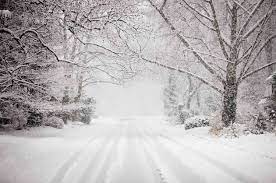Ever since I was little, superstitions like wearing your pajamas inside out or sleeping with a spoon under your pillow would cause snowfall were popular among myself and my peers. By doing these unusual practices, we would effectively cancel school. Although such procedures don’t have any effect on snowfall or the weather, historical trends and meteorological data do suggest a record snowfall in New Jersey for 2023.
If one was around during this summer, they may have noticed a change compared to the last couple of years. In contrast to the hot and dry summers of 2020, 2021, and 2022, the summer of 2023 was relatively mild and wet. This change in weather patterns has led meteorologists to predict that the upcoming winter may bring heavier snowfall than in previous years. Increased moisture and cooler temperatures during the summer are good indicators of a potential shift towards a colder and snowier winter season. But how can this claim be justified?
Normal conditions across the Pacific have trade winds — wind currents that blow East to West via the Coriolis Effect — [near the equator, the winds in the Northern Hemisphere blow to the southwest, while in the Southern Hemisphere, those winds blow to the Northwest] that shift warmer water from off the Pacific toward Asia. To replace this lost water, cold water rises from the depths via a process known as upwelling. El Niño and La Niña are variations of this norm, as a part of the El Niño-Southern Oscillation (ENSO) cycle. It affects global weather patterns, wildfires, and ecosystems, thus affecting global economies. This same current brought European explorers to the shores of the Americas in the late 1400s.
For the last three years, the world has been plunged into a meteorological event known as La Niña (meaning ‘girl’ in Spanish). This weather phenomenon strengthens the trade winds, bringing cooler-than-average sea surface temperatures in the equatorial Pacific Ocean. In turn, this affects global weather patterns. In a La Niña year, the jetstream (west to east wind currents that crisscross the lower 48) is pushed north, towards Canada and New England. Because of this, La Niña is associated with decreased precipitation in the southern parts of the United States, and colder-than-average temperatures in the Pacific Northwest and Midwest. La Niña can also lead to a severe hurricane season. While one might assume that a La Niña year would produce more snow, New Jersey’s position on the Eastern Seaboard prevents significant snowfall in the state. Usually, this results in Western New York/Buffalo/Cleveland areas getting tons of snowfall.
By contrast, in an El Niño (meaning ‘boy’ in Spanish) year, the trade winds weaken, causing warmer water to push toward South America. This results in the opposite effect of La Niña. Less upwelling occurs, and the jetstream moves south. When this happens, the South receives heavy rainfall, while northern states are warmer and drier. As a result, more storms brew in the Eastern US and travel northward via the jetstream. The Northeast, however, varies in climate and precipitation. Especially during a strong El Niño year (meaning El Niño’s effects are amplified) a Nor’easter usually hits the Northeast. For example, a strong El Niño during the winter of 2015-16 brought more than three feet of snow to the Greater DC area, while meteorologists recorded twenty-eight inches of snow in Central Park, NYC. The 2009-2010 winter season saw cold temperatures across the south and central United States, and multiple blizzards struck the Northeast. The 2023-2024 winter season is supposed to be similar, experiencing the same pressures exerted through 2009-2010, with snow predicted to fall in Washington DC, Philadelphia, New York, and Boston. As long as these predictions are correct, New Jersey should receive several inches of snow; more than one blizzard will rip through the state.
Although a major blizzard isn’t definite, the northeastern US is due for a snowstorm. The meteorological conditions are perfect for such weather, and historical examples with nearly identical conditions produced record snowfall. Every Prep student should prepare for this coming winter, and enjoy the many days off from school.


